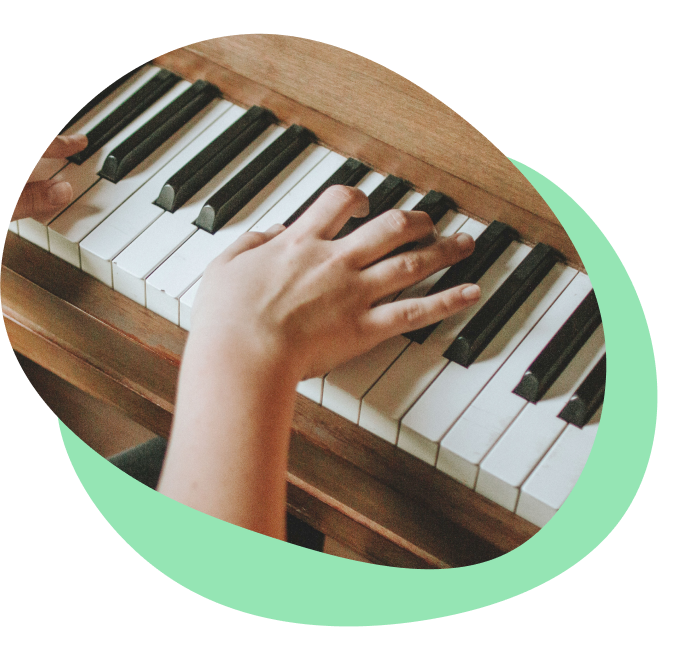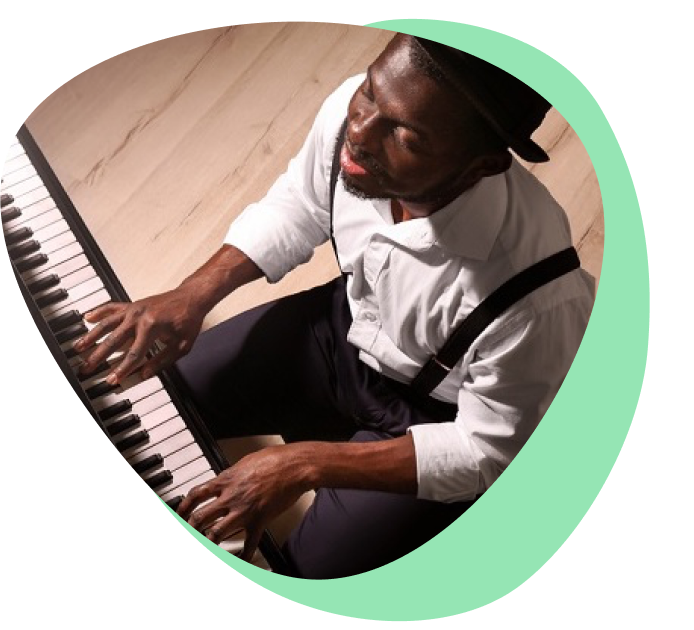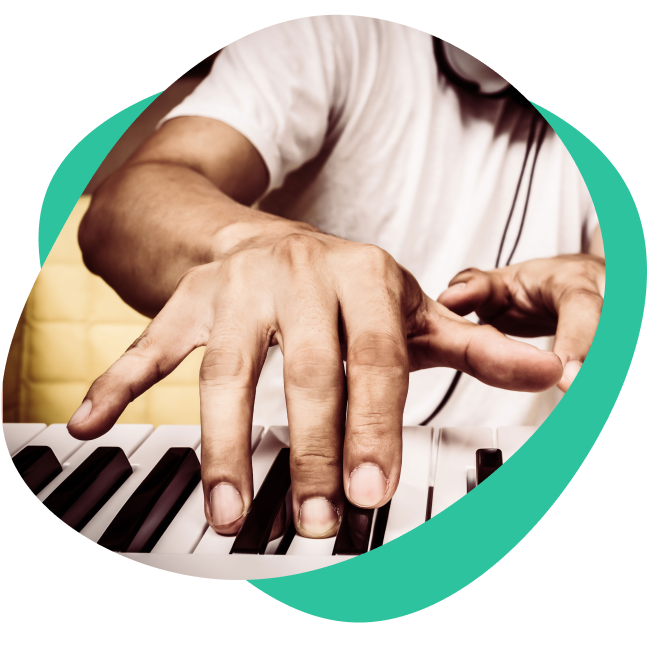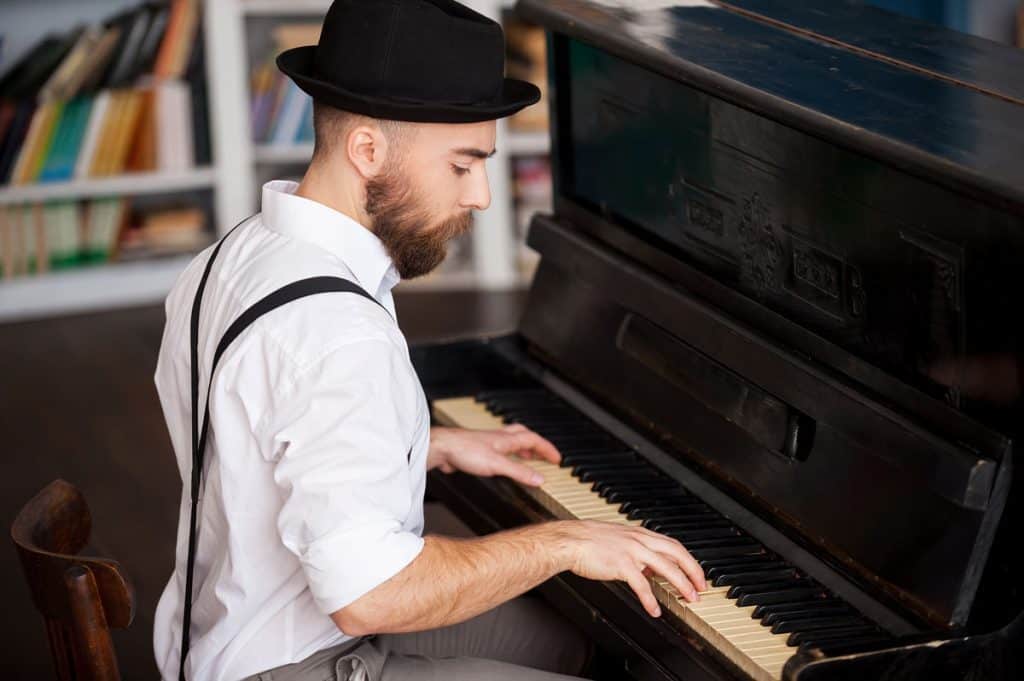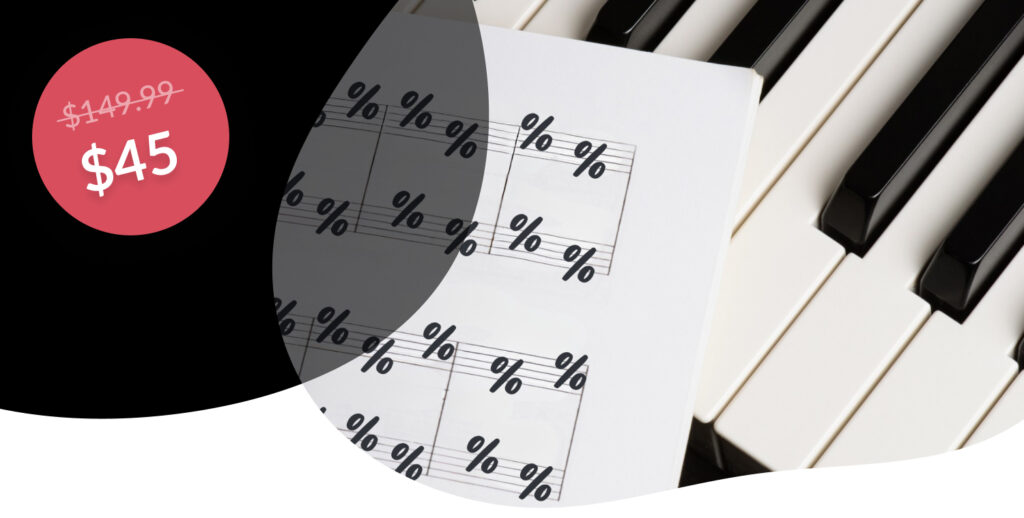Proper piano posture allows you to play with correct technique and position your hands effortlessly on the keys. When you start playing piano without guidance it can be easy to develop bad habits, which can be tough to break. This means learning the right posture and technique from the beginning is crucial, as they impact everything from hand movement and articulation to pedaling. Skoove is here to walk you through this beginner friendly guide to posture and technique for piano. Let’s start out by looking at what makes good piano posture.
- Fall in love with the music - Learn your favorite songs, at a level suitable for you.
- Enjoy interactive piano lessons - Explore courses covering music theory, technique chords & more.
- Get real-time feedback - Skoove's feedback tells you what went well and what needs practice.
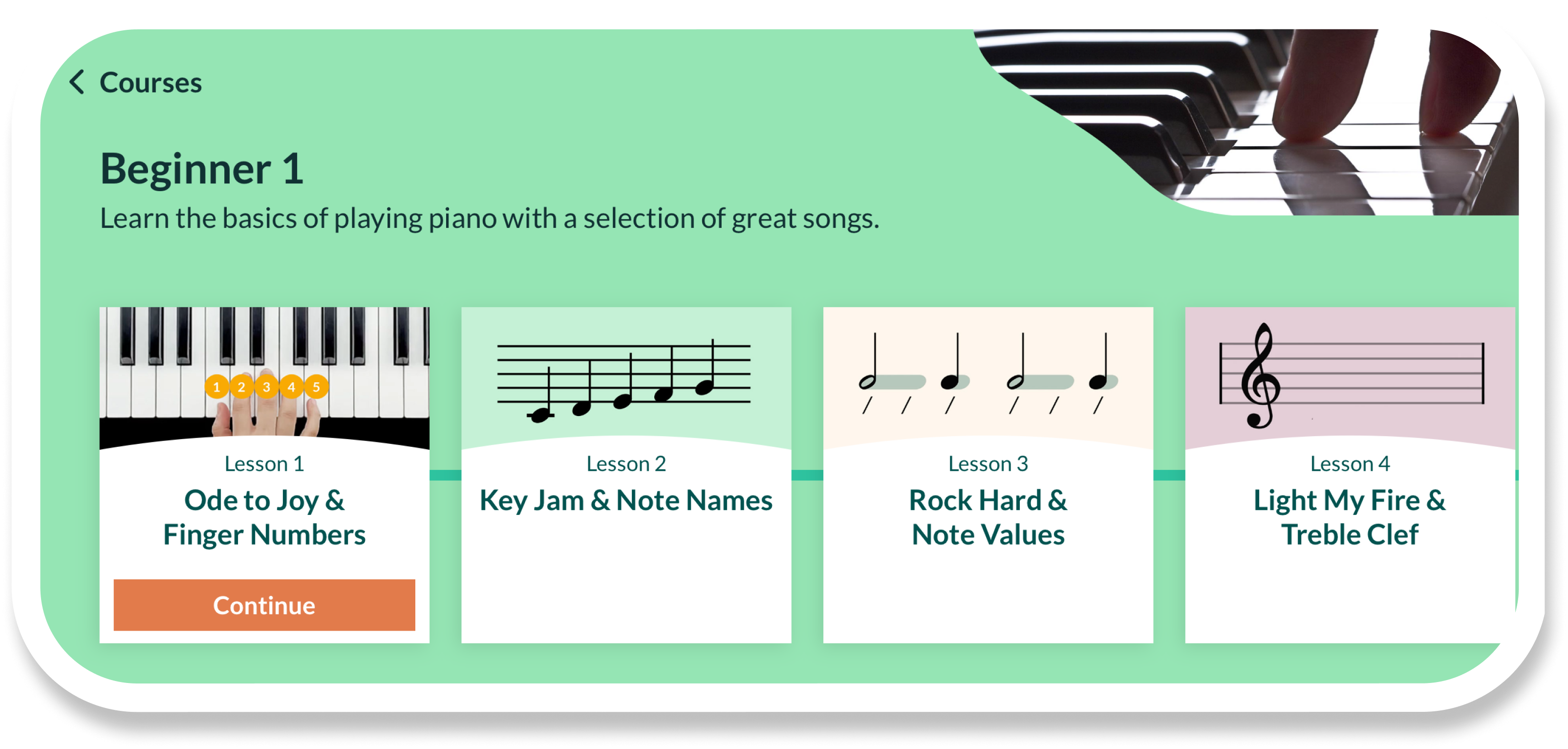
What is proper piano posture?
The most important point of proper posture that all piano students should know is that how you sit influences your piano hand position. Posture and hand position are intricately connected. Let’s break down the elements that make up correct piano posture.
What piano bench height is best for beginners?
First off, let’s get you sat properly. Choosing the right piano bench is crucial for both comfort and proper playing posture. Here’s a brief guide to help you select the appropriate bench height.
- Avoid Unsuitable Chairs. Steer clear of office chairs or armchairs with wheels and armrests. They are not ideal for playing the piano.
- Ensure your bench is not too low. This will prevent back and neck problems. Adjustable benches are helpful because they allow you to find the perfect piano sitting posture.
- Sit on the edge of the bench but make sure you are stable and not at risk of falling off.

The correct proximity to the piano
Now you have got a good bench and adjusted it to the right height you can start thinking about how to sit at the piano.
- When sitting at the piano, ensure there’s enough space between you and the keyboard, near the middle C, to allow free arm and hand movement.
- Avoid leaning forward; your upper arms and shoulders should hang relaxed from your body, with your body weight supported directly under your shoulders and neck to prevent injury.
- Your knees should be just under the keyboard, not too far back and not too close.
Test all of these steps out by sitting properly and playing the extreme high and low notes, you should be able to reach them comfortably from a central position.

Practicing the correct hand position
Now that you are on a well adjusted bench with a good posture it’s time to think about what you’re doing with your hands and wrists, your piano hand placement. This aspect alone has an immense impact on your overall learning process, therefore essential to spend time working on it. Let’s look at what we need to pay attention to in terms of finger and hand position when playing piano.
- Make sure your forearms naturally maintain an overall horizontal position relative to the keyboard, your hands and arms should be at a similar height.
- Imagine you’re holding an invisible ball in your hand, keeping your fingers slightly curved, making a relaxed C shape, but in such a way that it feels completely relaxed, and effortless.
- Tense wrists can greatly reduce the speed and finesse of your playing, keep them straight and relaxed.

With attention to all these factors you will have a comfortable piano posture that will help you learn with positive habits. This will allow you to play smoothly and reduce the risk of injury.
Top tips to help with your piano posture
Now we have gone through everything in detail, let’s look at a comprehensive checklist of things to keep in mind while you play. Focusing on these things as you develop your playing habits will foster good technique.
- Keep your wrists flexible and relaxed.
- Align your neck and your back.
- Relax and avoid neck, shoulder and back tension.
- Gently engage your core muscles to keep good posture.
- Keep your hands relaxed as you play, keep them in a soft C shape.
- Allow your arms to be heavy, and press the keys with the help of gravity.
- Keep your stand and sheet music in the right place so you don’t lean forward unnecessarily.
Have a go at one of our simple tailored lessons and be sure to focus on all these elements as you do so. This is your first step to building a lifetime of good piano habits.
What is proper piano technique?
Piano posture becomes natural once you learn it, it just takes a bit of time. The best pianists often look like they’re playing effortlessly, with their hands smoothly moving across the keys as if they’re barely touching them, this is all down to good technique and posture. Once you’ve got the right posture, it’s time to focus on your playing technique. Good technique isn’t just about playing fast or loud; it’s about developing healthy, efficient movements. Keeping in mind your good posture we discussed before, let’s look at some exercises that will help you develop good technique.
Practicing extremely slowly
A great way to develop a balanced technique on the piano is to practice extremely slowly. By practicing extremely slowly, you can take the time to notice the subtle intricacies of how the fingers push down the piano notes. Great tone on the piano, or any instrument for that matter, is developed by diving into this level of detail.
You can practice this in any number of ways with any piece, scale or exercise. The key is to keep a solid tempo at a speed that allows you to make the minimum number of mistakes.
Building finger strength and independence
You can use a basic five-finger exercise to develop your finger technique. For example, play the basic finger position C – D – E – F – G (right), G – F – E – D – C (left) with both hands at the same time. Go through these steps and focus on timing and control.
- Play these sets of five notes starting from piano, play these notes staccato or legato up to G, then back down to C. Now your exercise has some motion.
- Alternate the articulations in your hands. In your right hand, play staccato. In your left hand play legato. This will probably be much more difficult so take your time.
- Once you are confident with this, then you can switch the articulations between the hands and continue the exercise up and down the piano or switch to piano chords.
Finger strength and agility are pivotal for executing complex passages with precision. Playing Czerny’s studies with Skoove can significantly improve finger independence and control. Remember, the goal is not speed but clarity and evenness in tone.
Mastering chords and patterns
Understanding and mastering various chord patterns, including broken chords and cadences, is fundamental. This not only enhances technical skill but also deepens musical understanding. Practice different chord inversions and progressions to build versatility and adaptability.
Tone balancing on the piano
Tone balancing on the piano refers to the relative volumes of the notes played in both hands and each finger. Everyone has a dominant hand, right or left. Your dominant hand will naturally be stronger.
On the piano, this means that your dominant hand will most likely play notes louder, stronger, and with more confidence.
At first when learning how to play the piano, you will likely have greater technical facility with your dominant hand as well.There will also be particular fingers on each hand that are stronger than others. Your thumb, pointer finger, and middle finger are generally stronger than your fourth finger and pinky. Pay attention to this and be sure to control how you press the keys keeping the necessary dynamic level for each note by choice rather than necessity.
Common technique mistakes
Here are eight common piano technique mistakes to watch out for as you play piano. As with posture it’s good to keep these in mind as you play. Good habits last a lifetime, bad ones are hard to break. Be sure to watch out for:
- Collapsing fingers – be sure to keep a rounded, supported hand shape.
- Uneven finger strength – don’t rely on your stronger fingers (1, 2 and 3) and neglecting weaker ones (4 and 5).
- Poor legato connection – Avoid gaps in between notes from not coordinating finger changes smoothly.
- Over-pedalling – Be sure that you’re not hiding unclear technique with too much sustain pedal.
- Rushing difficult passages – not slowing down to build clean, controlled movement first is the best way to build bad habits.
- Use the right fingers – Ignoring consistent fingering, leading to uneven sound and mistakes.
These are just a few of the things you need to focus on as you develop your technique. As you improve you can add more nuance in terms of dynamics, articulations and pedalling.
Bring your playing to the next level with Skoove
Remember, the path to piano mastery is a continuous journey of learning and growth. Each practice session, each piece you master and each challenge you overcome adds to your musical understanding and knowledge of how to get better at piano. As you continue to refine your posture and technique, consider exploring resources like Skoove’s structured online piano lessons that align with everything we looked at in this guide. We have only seen the tip of the iceberg, if you ever need any more guidance Skoove has courses, technical exercises and all of your favorite songs to play as work on your posture and technique.
Whether you’re playing for personal enjoyment or aspiring to perform on stage, the joy of piano playing lies in the journey itself. Keep exploring, keep learning and let the music flow from your heart through your fingers to the piano keys.
Author of this blog post:
Susana Pérez Posada

With over seven years in piano education and a deep passion for music therapy, Susana brings a unique blend of expertise to Skoove. A graduate in Music Therapy from SRH Hochschule Heidelberg and an experienced classical pianist from Universidad EAFIT, she infuses her teaching with a holistic approach that transcends traditional piano lessons. In her writings for Skoove, Susana combines her rich musical knowledge with engaging storytelling, enriching the learning experience for pianists of all levels. Away from the piano, she loves exploring new places and immersing herself in a good book, believing these diverse experiences enhance her creative teaching style.
Published by the Skoove team




